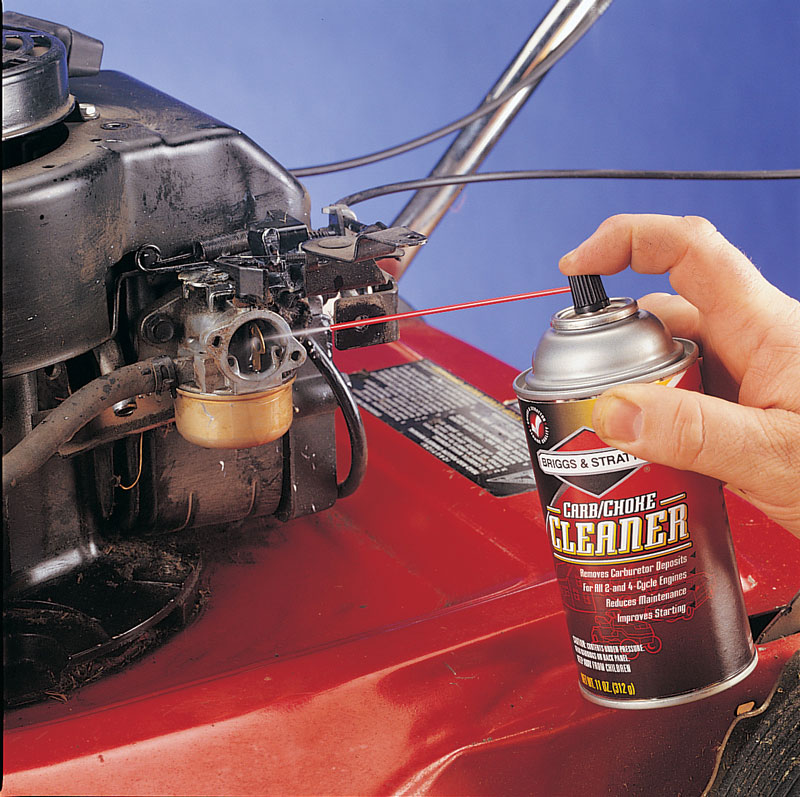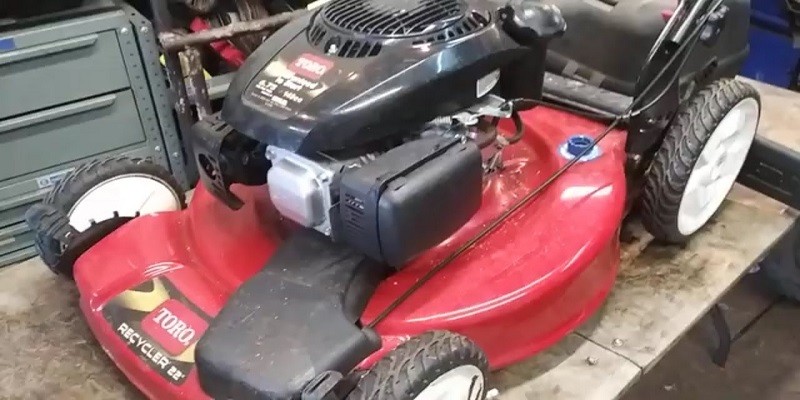To clean a Toro lawnmower carburetor, follow these steps: remove the carburetor, clean the exterior, disassemble the carburetor, clean the individual components, reassemble the carburetor, and reinstall it on the lawnmower. Cleaning the carburetor regularly helps maintain the lawnmower’s performance and extends its lifespan.
Neglecting carburetor maintenance may cause starting issues, poor fuel efficiency, or engine stalling. By properly cleaning the carburetor, you can ensure smooth operation of your Toro lawnmower and keep your lawn looking its best.
Signs Of A Dirty Carburetor
A dirty carburetor can be identified by signs like difficulty starting the lawnmower, rough idle, or poor performance. To clean a Toro lawnmower carburetor, follow these steps for optimal results and smooth operation of your lawnmower.
Is your Toro lawnmower not performing as well as it used to? It could be due to a dirty carburetor. The carburetor plays a crucial role in the functioning of the engine, and when it becomes clogged or dirty, it can lead to various performance issues.
By knowing the signs of a dirty carburetor, you can take the necessary steps to clean and maintain it, ensuring optimal performance for your Toro lawnmower.
Recognizing Engine Performance Issues:
- Rough idling: If your lawnmower is idling roughly or fluctuating in RPMs, it could be a sign that the carburetor is dirty. This can result in an unstable engine and affect the overall performance of the lawnmower.
- Difficulty starting: A dirty carburetor can make it challenging to start the lawnmower. You may find yourself pulling the starter cord several times before the engine finally starts.
- Stalling: When the carburetor is clogged, the engine may stall unexpectedly during operation. This can be frustrating and disrupt your lawn mowing routine.
- Reduced power and performance: If you notice a decline in the power and performance of your lawnmower, a dirty carburetor can be the culprit. It can affect the engine’s ability to generate sufficient power, leading to a slower cutting speed and overall inefficiency.
Identifying Carburetor-Related Problems:
- Fuel leaks: A dirty carburetor can cause leaks in the fuel system. If you notice any signs of fuel leakage, such as a strong smell of gasoline or visible stains around the carburetor, it indicates a problem that requires immediate attention.
- Black smoke from exhaust: When the carburetor becomes dirty, it may affect the air-fuel mixture, leading to an overly rich mixture. This can result in the emission of black smoke from the lawnmower’s exhaust.
- Difficulty adjusting idle speed: If you find it challenging to adjust the idle speed of your lawnmower, it could be due to a dirty carburetor. The buildup of debris can hinder the smooth operation of the idle adjustment screw or valve.
- Poor fuel efficiency: A dirty carburetor can lead to poor fuel efficiency, requiring more fuel to achieve the desired level of performance. If you notice that your lawnmower is consuming more fuel than usual, it’s worth checking the carburetor for any dirt or blockages.
Now that you’re aware of the signs of a dirty carburetor, you can proceed with cleaning and maintenance to restore your Toro lawnmower’s performance.

Credit: www.briggsandstratton.com
Preparing For Carburetor Cleaning
To clean a Toro lawnmower carburetor, follow these steps: 1) disconnect the spark plug, 2) remove the air filter and cover, 3) take off the carburetor bowl and clean it, 4) inspect the carburetor jets and passages, 5) use carburetor cleaner to remove any deposits, 6) reassemble the carburetor and test the lawnmower.
Keep your Toro lawnmower running smoothly with regular carburetor maintenance.
To ensure a successful cleaning process for your Toro lawnmower carburetor, there are a few steps you need to take beforehand. Gathering the necessary tools and materials and ensuring personal safety are key aspects of this preparation. Let’s dive into the details:
Gathering Necessary Tools And Materials
Prior to cleaning your Toro lawnmower carburetor, make sure you have the following tools and materials on hand:
- Screwdriver: A screwdriver will be needed to remove any screws or bolts holding the carburetor in place.
- Carburetor cleaner: This is the primary cleaning agent used to remove any built-up debris or sediments from the carburetor.
- Compressed air: You will need compressed air to blow out any stubborn particles or clogs from the carburetor’s various components.
- Safety goggles: Protect your eyes from debris and prevent any potential accidents during the cleaning process.
- Gloves: Wearing gloves will not only keep your hands clean but also protect them from any sharp edges or chemicals.
- Container: A container will be necessary to hold the carburetor cleaner. Make sure it’s large enough to submerge the carburetor if required.
- Rag or towel: Keep a rag or towel handy to wipe off any excess cleaner or to dry components after cleaning.
Ensuring Personal Safety During The Cleaning Process
As with any maintenance task, it’s crucial to prioritize personal safety when cleaning your Toro lawnmower carburetor. Here are some important safety measures to follow:
- Work in a well-ventilated area: Cleaning a carburetor often involves the use of chemicals, so it’s essential to do so in a properly ventilated space to avoid any inhalation hazards.
- Wear protective gear: Put on safety goggles to shield your eyes from potential debris and gloves to safeguard your hands from any sharp edges or chemicals.
- Disconnect the spark plug: Before beginning the cleaning process, always disconnect the spark plug to prevent any accidental engine starts while working on the carburetor.
- Read and follow instructions: Familiarize yourself with the instructions provided by the manufacturer for cleaning the carburetor. Adhering to these guidelines will help you perform the task safely and effectively.
- Keep flammables away: Ensure that there are no flammable materials or open flames nearby during the cleaning process to minimize fire risks.
By gathering all the necessary tools and materials and strictly adhering to safety precautions, you are now ready to clean your Toro lawnmower carburetor with confidence.
Step-By-Step Guide To Cleaning A Toro Lawnmower Carburetor
Looking for a step-by-step guide on how to clean a Toro lawnmower carburetor? This comprehensive tutorial will walk you through the process, ensuring your lawnmower functions at its best.
Cleaning your Toro lawnmower carburetor is an important maintenance task that can help improve the performance and prolong the life of your machine. A clean carburetor ensures proper fuel and air mixture, resulting in smooth operation and efficient grass cutting.
Follow this step-by-step guide to clean your Toro lawnmower carburetor effectively.
Removing The Air Filter And Fuel Tank:
- Disconnect the spark plug wire to avoid any accidental starts.
- Remove the air filter cover and take out the air filter.
- Empty the fuel tank by either running the engine until it’s out of fuel or by siphoning it out.
Disconnecting The Carburetor:
- Locate the carburetor on your Toro lawnmower.
- Disconnect the fuel line and detach any linkages or cables connected to the carburetor.
Cleaning The External Surface Of The Carburetor:
- Use a clean rag or brush to remove any dirt, debris, or oil from the external surface of the carburetor.
- Be gentle and thorough to ensure a clean surface before proceeding.
Disassembling The Carburetor:
- Carefully remove the carburetor from the lawnmower.
- Take note of the order in which the components are assembled for easier reassembling later.
Cleaning The Carburetor Components With Carburetor Cleaner:
- Spray carburetor cleaner on all the carburetor components including the bowl, throat, and jets.
- Use a small brush to scrub away any stubborn dirt or deposits.
Cleaning The Pilot And Main Jets:
- Remove the pilot and main jets from the carburetor using a small wrench or screwdriver.
- Spray carburetor cleaner directly into the jets and use a wire or brush to clean out any clogs or buildup.
Inspecting And Cleaning The Float And Needle Valve:
- Check the float and needle valve for any signs of damage, wear, or blockage.
- Clean these components using carburetor cleaner and ensure smooth movement.
Reassembling The Carburetor:
- Put the cleaned components back in their appropriate positions in the carburetor.
- Reattach the pilot and main jets, ensuring they are securely tightened.
Reattaching The Carburetor And Fuel Tank:
- Reconnect the carburetor to the lawnmower, ensuring all linkages and cables are properly attached.
- Reconnect the fuel line to the carburetor and ensure it is tightly secured.
Reinstalling The Air Filter:
- Place the air filter back into its designated position.
- Reinstall the air filter cover, ensuring it is securely fastened.
Following these step-by-step instructions will help you effectively clean your Toro lawnmower carburetor. Regular maintenance and cleaning of the carburetor will ensure optimal performance and extend the lifespan of your lawnmower. Enjoy a well-maintained machine for a pristine, manicured lawn.
Tips For Maintaining A Clean Carburetor
Maintain a clean carburetor in your Toro lawnmower with these helpful tips. Ensure optimal performance by regularly cleaning the carburetor, inspecting for clogs, and using carburetor cleaning solutions.
A properly functioning carburetor is essential for keeping your Toro lawnmower running smoothly. Regular maintenance and cleaning of the carburetor can help prevent issues such as engine stalling and poor performance. Here are some tips to help you keep your lawnmower’s carburetor in top shape:
Regularly Inspecting And Cleaning The Carburetor:
- Start by identifying the location of the carburetor on your Toro lawnmower. It is usually found near the engine, and you may need to remove some parts or panels to access it.
- Inspect the carburetor for any signs of dirt, debris, or clogs. Pay close attention to the jets and passages, as these are the areas most prone to blockages.
- Use a carburetor cleaner spray to remove any built-up residue or dirt. Follow the instructions on the cleaner and ensure that you target all the small crevices of the carburetor.
- For stubborn deposits, you can use a small brush or a toothbrush to gently scrub away the dirt. Be careful not to damage any delicate parts of the carburetor while cleaning.
- After cleaning, rinse the carburetor with clean water to remove any leftover cleaner or loosened debris.
- Allow the carburetor to dry completely before reassembling it back onto the lawnmower.
Using Fresh Fuel And Fuel Stabilizer:
- Always use fresh, clean fuel in your lawnmower. Stale or contaminated fuel can lead to carburetor problems.
- Consider using a fuel stabilizer when storing your lawnmower for extended periods. This will help prevent the fuel from deteriorating and clogging the carburetor.
- Follow the manufacturer’s recommendations for the appropriate type and octane rating of fuel to use in your Toro lawnmower.
- When refueling, avoid spilling fuel around the carburetor or other engine components. Clean up any spills immediately to prevent damage.
Storing The Lawnmower Properly During Off-Seasons:
- Before storing your lawnmower for a long period, such as during winter, it’s crucial to prepare it for storage.
- Start by thoroughly cleaning the mower, including the carburetor, to remove any dirt or grass clippings.
- Add a fuel stabilizer to the tank and run the engine for a few minutes to ensure the stabilizer circulates through the carburetor and fuel system.
- Drain any remaining fuel from the tank or add a fuel preservative to prevent it from deteriorating and causing carburetor issues.
- Store the lawnmower in a dry, well-ventilated area, away from extreme temperature fluctuations and moisture.
Taking the time to regularly inspect and clean your Toro lawnmower’s carburetor, using fresh fuel, and storing it properly during off-seasons will help maintain optimal performance and prolong the life of your lawnmower. Remember to follow safety precautions and consult your owner’s manual for specific guidelines related to your Toro model.
Happy mowing!
Frequently Asked Questions Of How To Clean A Toro Lawnmower Carburetor?
Can You Clean A Lawn Mower Carburetor Without Taking It Apart?
No, it is not possible to clean a lawn mower carburetor without taking it apart.
How Do I Know If My Lawn Mower Has A Clogged Carburetor?
Signs of a clogged carburetor in a lawn mower include difficulty starting, rough idling, and stalling during operation.
Can You Clean A Carburetor Without Removing It?
Yes, you can clean a carburetor without removing it. Follow these steps for effective cleaning.
What’S The Easiest Way To Clean A Carburetor On A Lawn Mower?
To clean a carburetor on a lawn mower, follow these steps: remove the carburetor, disassemble it, clean the parts with carburetor cleaner, and reassemble and reinstall it.
How Often Should I Clean The Toro Lawnmower Carburetor?
It is recommended to clean the Toro lawnmower carburetor at least once a year to ensure optimal performance.
Conclusion
Maintaining and cleaning your Toro lawnmower carburetor is essential for optimal performance and longevity. By following the step-by-step guide provided in this blog post, you can easily tackle this task. Start by disconnecting the spark plug, removing the carburetor, and carefully disassembling it.
Thoroughly clean each component using a carburetor cleaner and compressed air. Pay attention to small passages and jets that may have debris or blockage. Reassemble the carburetor and reinstall it onto the lawnmower. Finally, reconnect the spark plug and test the lawnmower to ensure it is running smoothly.
Regularly cleaning your Toro lawnmower carburetor will prevent fuel blockage, improve the engine’s efficiency, and extend the life of your machine. Don’t overlook this crucial maintenance task and enjoy a well-maintained lawnmower for years to come.
Last Updated on November 16, 2025 by Marjorie R. Rogers, MA (English), Certified Consultant


